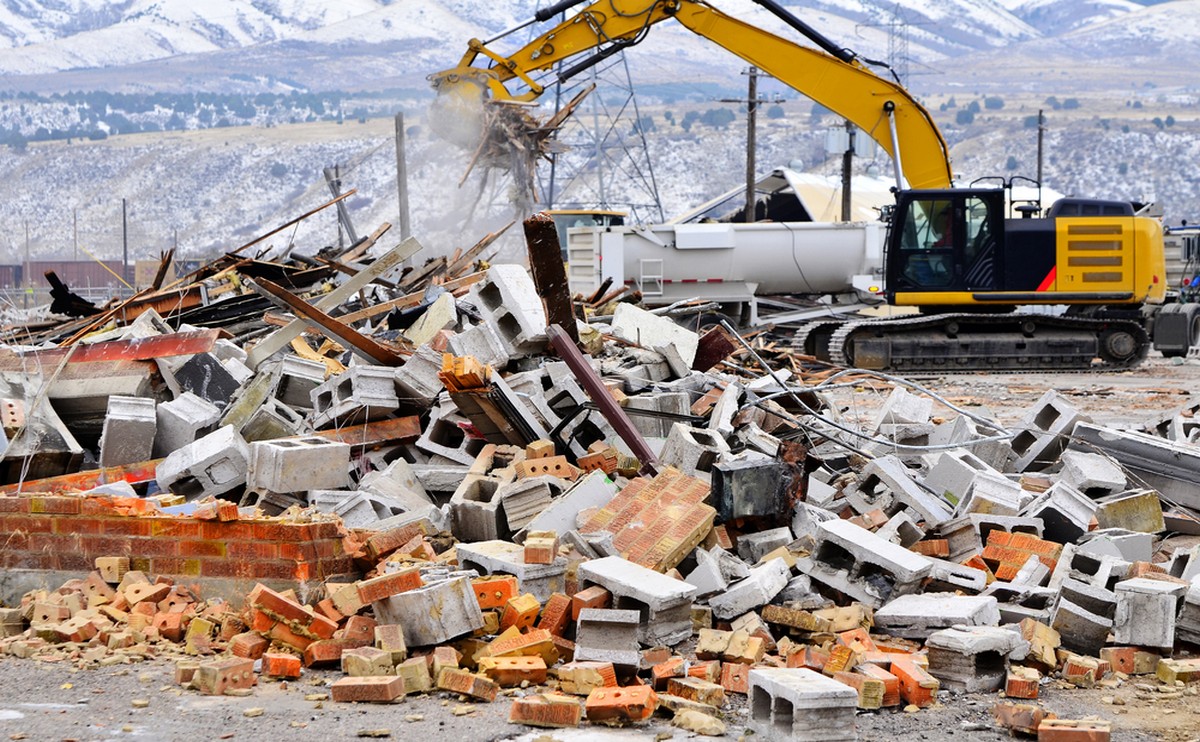Blog
Innovative Ways to Reduce Construction Waste in 2024: A Guide for Bangladesh

Table of Contents
- Introduction
- The Construction Waste Problem in Bangladesh
- Why Reducing Construction Waste Matters
- Top 10 Innovative Waste Reduction Techniques
- Case Studies: Successful Waste Reduction in Bangladesh
- How Civil Engineers Can Lead Waste Reduction Efforts
- Government Policies and Industry Standards
- Top 5 Video Courses on Sustainable Construction
- Top 5 Books on Waste Reduction in Construction
- Conclusion
1. Introduction
The construction industry in Bangladesh is booming, with mega-projects like the Padma Bridge and Dhaka Metro Rail transforming the urban landscape. However, this growth comes with a hidden cost: massive construction waste generation.
In 2024, innovative waste reduction strategies are more critical than ever. This guide explores:
- The current waste management challenges in Bangladesh
- Cutting-edge techniques to minimize construction waste
- Role of civil engineers in sustainable construction
- Resources for professionals to upgrade their skills
Whether you’re a civil engineer, contractor, or environmentally conscious citizen, this post will help you understand how to build smarter while reducing waste.
2. The Construction Waste Problem in Bangladesh
Current Statistics:
- Bangladesh generates 6.5 million tons of construction waste annually (DoE, 2023)
- Dhaka alone produces 4,000+ tons of construction debris daily
- Only 15-20% of waste is recycled (most ends up in landfills or water bodies)
Common Waste Materials:
- Concrete and bricks (45%)
- Steel and metal (20%)
- Wood and bamboo (15%)
- Packaging materials (10%)
- Miscellaneous (10%)
3. Why Reducing Construction Waste Matters
Environmental Impact:
- Landfills are reaching capacity (Dhaka’s Aminbazar landfill is overburdened)
- Water pollution from improper disposal affects rivers like Buriganga
- Air pollution from burning waste materials
Economic Benefits:
- 30-40% cost savings through material optimization
- New business opportunities in recycling and upcycling
- Compliance with international green building standards (LEED, BREEAM)
Social Responsibility:
- Safer working conditions for laborers
- Reduced public health risks
- Sustainable urban development
4. Top 10 Innovative Waste Reduction Techniques
1. Prefabrication and Modular Construction
- Benefits:
- Reduces on-site waste by 60-70%
- Faster construction (e.g., Bashundhara’s modular housing projects)
- Best for: High-rise buildings, bridges
2. Building Information Modeling (BIM)
- How it helps:
- 3D modeling prevents material over-ordering
- Detects clashes before construction begins
- Software options: Revit, AutoCAD, Tekla
3. Material Optimization Techniques
- Strategies:
- Just-in-Time (JIT) delivery
- Cutting templates for bricks/concrete
- Using standardized formwork
4. Construction Waste Recycling
- Recyclable materials:
- Crushed concrete as sub-base material
- Steel reinforcement bars
- Brick chips for landscaping
- Pioneers in Bangladesh:
- Metro Rail Project (70% waste recycled)
- LafargeHolcim Bangladesh (eco-friendly concrete)
5. Deconstruction Instead of Demolition
- Advantages:
- 90% material recovery vs. 40% in traditional demolition
- Preserves historic building elements
- Example: Old Dhaka renovation projects
6. Digital Waste Tracking Systems
- Technologies:
- RFID tags for material tracking
- AI-powered waste analytics
- Local solution: WasteTrack BD (startup monitoring construction debris)
7. Sustainable Material Alternatives
- Innovations:
- Bamboo scaffolding (instead of steel)
- Fly ash bricks (30% lighter, lower carbon footprint)
- Recycled plastic bricks (pioneered by Waste Concern)
8. Lean Construction Principles
- Key practices:
- Last Planner System
- Value stream mapping
- Results: 15-20% waste reduction
9. On-Site Waste Sorting Stations
- Implementation:
- Separate bins for concrete, metal, wood
- Designated recycling zones
- Case study: Purbachal New Town Project
10. Worker Training Programs
- Focus areas:
- Proper material handling
- Waste segregation techniques
- Training providers: BUET, BGBC
5. Case Studies: Successful Waste Reduction in Bangladesh
A. Dhaka Metro Rail (MRT Line 6)
- Achievements:
- 70% construction waste recycled
- Precast segments reduced on-site waste
- Lessons: Large-scale projects can adopt circular economy principles
B. Square Hospital Expansion (LEED Gold)
- Strategies:
- BIM-enabled material optimization
- Concrete waste reused in landscaping
- Result: 35% less waste than conventional hospitals
C. Community-Led Initiatives
- Example:Waste Concern’s recycling plant
- Processes 100+ tons of construction waste monthly
- Creates jobs for low-income communities
6. How Civil Engineers Can Lead Waste Reduction Efforts
Design Phase:
- Specify modular dimensions to minimize cutting waste
- Choose materials with high recycled content
Construction Phase:
- Implement daily waste audits
- Partner with local recyclers
Post-Construction:
- Document waste diversion rates
- Share best practices through industry seminars
7. Government Policies and Industry Standards
Existing Regulations:
- Bangladesh National Building Code (NBC 2020) – Waste management guidelines
- DoE Guidelines – Mandatory waste disposal plans for large projects
Recommendations:
- Tax incentives for green construction
- Public-private partnerships for recycling infrastructure
8. Top 5 Video Courses on Sustainable Construction
- Construction Waste Management (Udemy)
🔗 https://www.udemy.com/course/construction-waste-management/ - Lean Construction Principles (Coursera)
🔗 https://www.coursera.org/learn/lean-construction - BIM for Sustainable Design (LinkedIn Learning)
🔗 https://www.linkedin.com/learning/ - Circular Economy in Construction (edX)
🔗 https://www.edx.org/course/circular-economy-in-construction - Green Building and LEED (USGBC)
🔗 https://www.usgbc.org/courses
9. Top 5 Books on Waste Reduction in Construction
- “Sustainable Construction: Green Building Design and Delivery”
🔗 https://www.amazon.com/dp/111970170X - “Construction Waste Management Handbook”
🔗 https://www.amazon.com/dp/0865871740 - “The Lean Construction Pocket Guide”
🔗 https://www.amazon.com/dp/0982764906 - “Building with Reclaimed Components”
🔗 https://www.amazon.com/dp/1844072745 - “Bangladesh Construction Industry Guide”
🔗 https://www.amazon.com/dp/9843345670
10. Conclusion
Reducing construction waste isn’t just an environmental imperative—it’s an economic opportunity for Bangladesh. By adopting these innovative techniques, civil engineers can:
- Save costs through material efficiency
- Comply with global sustainability standards
- Create healthier urban environments
